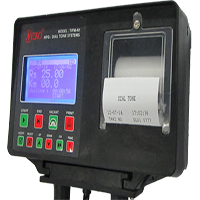Taxi Meter
Description
Taximeters were originally mechanical and mounted outside the cab, above the driver's side front wheel. Meters were soon relocated inside the taxi, and in the 1980s electronic meters were introduced, doing away with the once-familiar ticking sound of the meter's timing mechanism.
In some locations, taxicabs display a small illuminated sign indicating if they are free (available). In, this sign is called a "banderita" (little flag), a carryover term from the days of mechanical taximeters, in which a little flag was turned to wind up the mechanism. The flag would be hidden at the start of a trip and moved to the visible position at the end.
World Moto developed the world's first portable taximeter for motorcycles and pedicabs, which Fast Company called "the First Real Taxi Meter Innovation in 100 Years".
Features
- Ticket/receipt printer
- Fraud control and prevention (on the part of the owner or operator), through the impression of control tickets or computer monitoring. Additionally, taximeters are often visually sealed by a municipal weights and scales authority after initial calibration.
- Radio communication, allowing trip status to be monitored by a dispatcher or supervisor.
- Dispatching of trip assignments through radio or data systems.
- Interaction with GPS system to assist with dispatching and to provide security.
- Seat sensors that detect the presence of a passenger (to prevent a cab from carrying fares without activating the taximeter).
- Credit or prepaid card support.
- Bluetooth support for communication with smartphones or tablets.
- USB support for setup, diagnostics, and connectivity to the vehicle computer.

